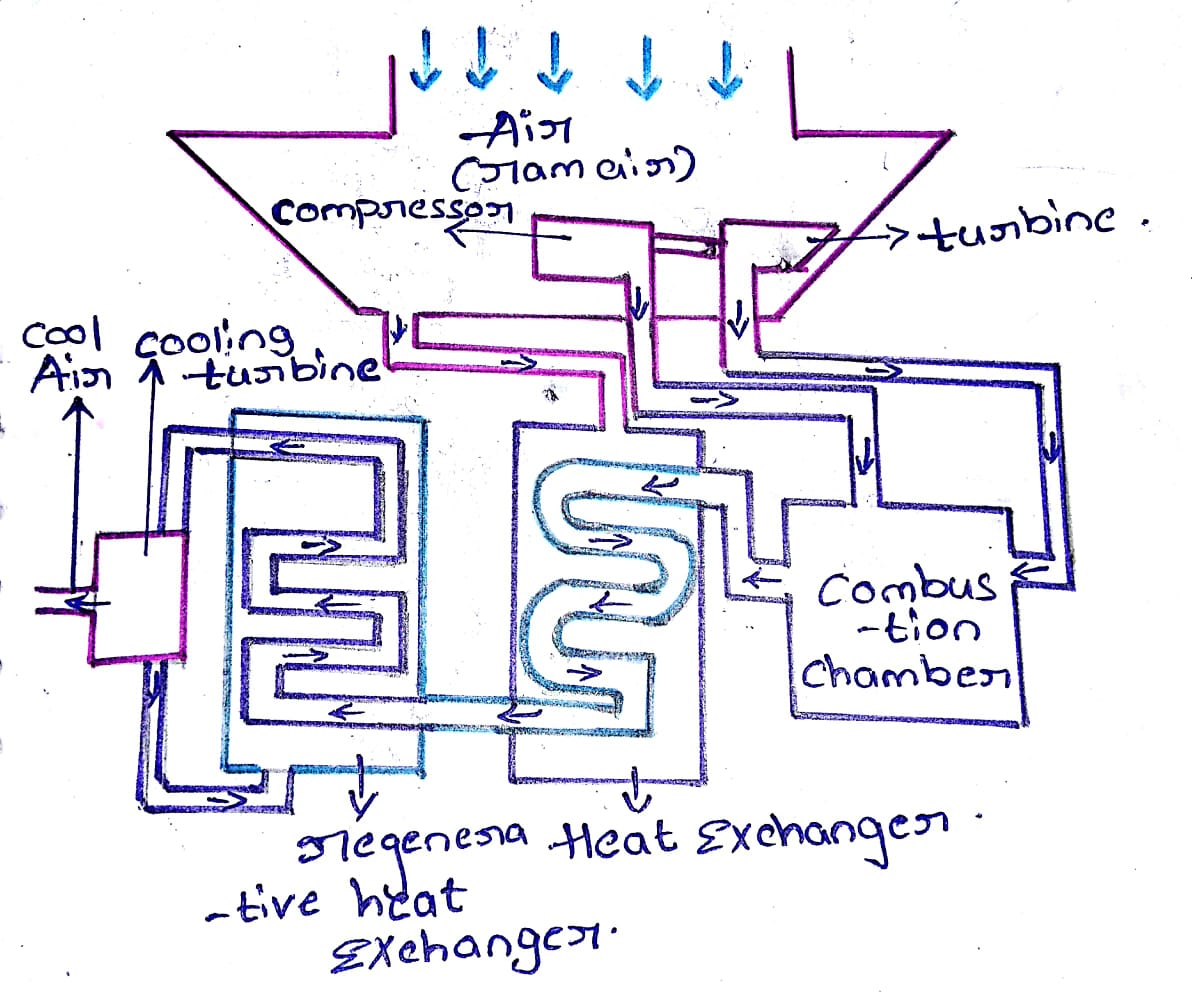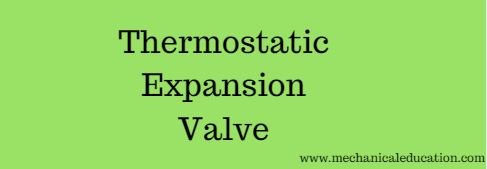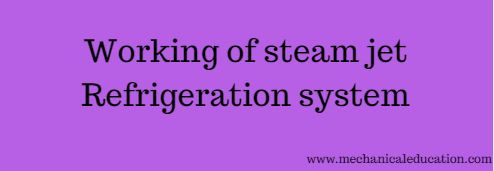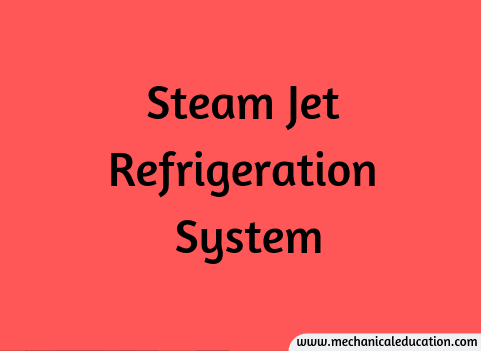What is Reciprocating Compressors?
Reciprocating compressors are a type of positive displacement compressor commonly used in various applications, including refrigeration, air conditioning, and industrial processes. Here are key characteristics and features of reciprocating compressors:
- Working Principle:
- Reciprocating compressors operate on the principle of reciprocating motion, where a piston moves back and forth within a cylinder. This motion creates a suction stroke to draw in refrigerant or gas, followed by a compression stroke to increase its pressure.
- Application Areas:
- Reciprocating compressors are used in various applications, including household refrigerators, air conditioning units, industrial refrigeration, gas compression in natural gas processing plants, and pneumatic tools.
- Compact Design:
- They are often more compact compared to some other types of compressors, making them suitable for applications where space is limited.
- High Efficiency at Low Discharge Pressures:
- Reciprocating compressors are generally efficient when operating at lower discharge pressures. They are suitable for applications where a high compression ratio is not required.
- Oil Lubrication:
- Many reciprocating compressors use lubricating oil to reduce friction and ensure smooth operation. Proper oil management is essential to prevent issues like oil carryover into the refrigeration or gas lines.
- Capacity Control:
- Capacity control in reciprocating compressors is achieved through various methods, such as suction throttling, cylinder unloading, or variable speed control. This allows the compressor to match the varying load conditions.
- Maintenance Requirements:
- Reciprocating compressors require regular maintenance, including checking and changing lubricating oil, inspecting valves and seals, and ensuring proper alignment of components.
- Pressure and Temperature Limitations:
- Reciprocating compressors are suitable for applications with moderate pressure and temperature requirements. They may not be as well-suited for extremely high-pressure or high-temperature applications.
- Noise and Vibration:
- Compared to some other compressor types, reciprocating compressors can produce more noise and vibration during operation. Proper installation and maintenance practices can help mitigate these effects.
- Cost Considerations:
- Reciprocating compressors are often cost-effective for smaller to medium-sized applications. However, for larger applications, other compressor types like screw or centrifugal compressors may offer better efficiency.
Reciprocating compressors have been widely used for many years due to their reliability, simplicity, and suitability for various applications. However, advancements in technology have led to the development of alternative compressor types that may offer certain advantages in specific scenarios. The choice of compressor type depends on factors such as the application requirements, capacity, efficiency goals, and budget constraints.
Types of Reciprocating Compressors
There are two main types of reciprocating compressors based on their construction and working principle: single-acting reciprocating compressors and double-acting reciprocating compressors. Here’s an overview of each type:
- Single-Acting Reciprocating Compressors:
- In single-acting reciprocating compressors, compression of gas occurs only during one direction of the piston’s stroke.
- The piston moves in one direction (either up or down), creating a suction stroke that draws gas into the cylinder.
- During the compression stroke, the gas is compressed and expelled from the cylinder.
- Commonly used in small-scale applications and household appliances, such as refrigerators and small air compressors.
- Double-Acting Reciprocating Compressors:
- Double-acting reciprocating compressors compress gas during both directions of the piston’s stroke.
- The piston moves in both directions within the cylinder, creating suction and compression strokes on both sides.
- This design results in more continuous and efficient compression compared to single-acting compressors.
- Often employed in larger industrial applications where higher compression ratios and greater efficiency are required.
- Commonly used in large-scale refrigeration systems, petrochemical industries, and natural gas processing plants.
The choice between single-acting and double-acting reciprocating compressors depends on factors such as the application requirements, size, efficiency goals, and the desired compression ratio. Single-acting compressors are simpler and cost-effective for smaller applications with lower compression ratios, while double-acting compressors offer higher efficiency and are suitable for larger-scale applications with higher compression ratios.
Additionally, reciprocating compressors may have variations in their configurations and features based on specific applications and industry requirements. Some variations include:
- Diaphragm Compressors: Use a flexible diaphragm instead of a piston to compress gas. These compressors are suitable for applications requiring a hermetic and leak-tight design.
- Swing Compressors: Utilize a swinging piston mechanism, providing pulsation-free and continuous compression. These compressors are commonly used in medical and laboratory applications.
- Hermetic Compressors: Feature a sealed design where the motor and compressor are enclosed within the same housing. Hermetic compressors are commonly found in household refrigerators and air conditioning units.
Each type and variation of reciprocating compressor is designed to meet specific needs and constraints in various industries and applications. The selection of the appropriate type depends on factors such as the application’s capacity, pressure requirements, efficiency goals, and space constraints.
Work Done by a Single-Stage Reciprocating Compressors
The work done by a single-stage reciprocating compressor can be calculated using the basic thermodynamic principles associated with the compression process. The work done during the compression process is typically expressed in terms of the area on a pressure-volume (P-V) diagram.
The work done (W) during the compression process in a reciprocating compressor can be calculated using the equation:
W=P1⋅V1⋅ln(V2/V1)
Where:
- W is the work done during compression.
- P1 is the suction pressure (initial pressure).
- V1 is the suction volume (initial volume).
- V2 is the discharge volume (final volume) after compression.
- lnln represents the natural logarithm.
It’s important to note that this formula assumes an isentropic process, which means an adiabatic and reversible compression process. In practice, some compression processes may involve heat exchange with the surroundings (non-isentropic), and factors like clearance volume and valve losses may affect the actual work done.
Here’s a step-by-step explanation of the parameters:
- Suction Pressure (P1): The pressure at the beginning of the compression process.
- Suction Volume (V1): The volume at the beginning of the compression process.
- Discharge Volume (V2): The volume at the end of the compression process after the gas has been compressed.
It’s important to mention that this formula provides an idealized calculation and may not fully represent real-world conditions. In practical applications, additional considerations, such as mechanical efficiency, clearance volume, and other losses, would need to be taken into account to obtain a more accurate representation of the work done by a reciprocating compressor.
For a more accurate analysis of a specific compressor’s performance, manufacturers often provide performance curves or tables based on extensive testing and engineering data. Engineers and designers can use these curves along with specific operational parameters to assess the expected performance of a reciprocating compressor in a given application.
Work Done by a Single-Stage, Single Acting Reciprocating Compressor Without Clearance Volume
The work done by a single-stage, single-acting reciprocating compressor without clearance volume can be calculated using the area under the process curve on a pressure-volume (P-V) diagram. The work done during the compression process is given by the area enclosed by the curve representing the compression process.
For a single-stage, single-acting reciprocating compressor without clearance volume, the work done (W) can be calculated using the following equation:
W=P1⋅V1⋅ln(V1V2)
where:
- W is the work done during compression.
- P1 is the suction pressure (initial pressure).
- V1 is the suction volume (initial volume).
- V2 is the discharge volume (final volume) after compression.
- ln represents the natural logarithm.
This equation is similar to the one provided earlier, considering an isentropic (adiabatic and reversible) compression process. In this context:
- P1 is the pressure at the beginning of the compression process.
- V1 is the volume at the beginning of the compression process.
- V2 is the volume at the end of the compression process after the gas has been compressed.
It’s important to note that this equation assumes idealized conditions and does not account for factors like clearance volume, mechanical losses, or non-ideal behavior of the gas. In real-world applications, these factors may affect the actual work done by the compressor.
For a more accurate assessment of a specific compressor’s performance, manufacturers typically provide performance data, and engineers may use this information along with specific operational parameters to analyze and optimize the compressor’s efficiency in a given application.
Power Required to Drive a Single-Stage Reciprocating Compressor
The power required to drive a single-stage reciprocating compressor can be determined using the work done during the compression process, taking into account the efficiency of the compressor. The power (P) required is related to the work done (W) and the time it takes to perform the compression process.
The power required by a compressor is given by the formula:
P=W/n
where:
- P is the power required.
- W is the work done during compression.
- η is the efficiency of the compressor.
The work done (W) during the compression process can be calculated using the formula:
W=P1⋅V1⋅ln(V2/V1)
As mentioned earlier, P1 is the suction pressure, V1 is the suction volume, and V2 is the discharge volume.
It’s important to note that the efficiency (η) accounts for losses in the compression process, including mechanical losses, heat dissipation, and other inefficiencies. The efficiency is typically expressed as a decimal between 0 and 1.
So, the overall formula for the power required to drive a single-stage reciprocating compressor becomes:
P=P1⋅V1⋅ln(V2/V1)/n
This formula provides an estimate of the power required under idealized conditions. In practical applications, actual power requirements may vary due to factors such as clearance volume, valve losses, and other non-idealities.
Following are the three values of power obtained:
1.Isothermal Power = W (in isothermal compression) Nw/60 watts
2.Indicated Power = W (in polytropic compression) Nw/60 watts
3.Isentropic Power = W (in Isentropic compression) Nw/60 watts
For a more accurate assessment of power requirements, manufacturers often provide performance data, and engineers may use this information along with specific operational parameters and efficiency values to determine the actual power consumption of a reciprocating compressor in a given application.
Work Done by Reciprocating Compressor with Clearance Volume
The work done by a reciprocating compressor with clearance volume can be calculated considering the clearance volume in addition to the compression process. The clearance volume is the volume in the cylinder left at the end of the compression stroke when the piston is at its maximum displacement.
The work done during the compression process with clearance volume can be expressed as:
W=P1⋅V1⋅ln(V2+Vc/V1+Vc)
where:
- W is the work done during compression.
- P1 is the suction pressure (initial pressure).
- V1 is the suction volume (initial volume).
- V2 is the discharge volume (final volume) after compression.
- Vc is the clearance volume.
This equation incorporates the clearance volume in the calculation. The natural logarithm term reflects the change in volume, accounting for both the volume at the beginning and the clearance volume.
It’s important to note that the inclusion of the clearance volume provides a more accurate representation of the compression process in reciprocating compressors. Clearance volume affects the overall efficiency and performance of the compressor, influencing factors such as volumetric efficiency and isentropic efficiency.
In practical applications, the clearance volume can be determined experimentally or through manufacturer specifications. The work done is a crucial parameter in understanding the energy requirements of the compressor and assessing its efficiency.
Volumetric Efficiency of a Reciprocating Compressor
Volumetric efficiency is a measure of how well a reciprocating compressor fills its cylinder with gas during the suction or intake stroke, relative to the total cylinder volume. It is expressed as a ratio or percentage and is an important parameter in evaluating the efficiency of a compressor.
The volumetric efficiency (VE) of a reciprocating compressor is given by the ratio of the actual volume of gas drawn into the cylinder during the suction stroke (Vs) to the total cylinder volume (Vt):
VE=Vs/Vt
In this context:
- VE is the volumetric efficiency.
- Vs is the actual volume of gas drawn into the cylinder during the suction stroke.
- Vt is the total cylinder volume.
The total cylinder volume (Vt) is the sum of the displacement volume (Vd) and the clearance volume (Vc):
Vt=Vd+Vc
Therefore, the volumetric efficiency can also be expressed in terms of displacement volume and clearance volume:
VE=Vs/Vd+Vc
A reciprocating compressor with higher volumetric efficiency is more effective at drawing in and compressing the gas during the suction stroke, leading to better overall performance. Factors that can impact volumetric efficiency include clearance volume, valve design, pressure losses, and temperature variations.
To improve volumetric efficiency, engineers may optimize compressor design, reduce clearance volume, and use efficient valve mechanisms. Understanding and optimizing volumetric efficiency is crucial for enhancing the performance and energy efficiency of reciprocating compressors in various applications, including refrigeration, air conditioning, and industrial processes.
Factors Affecting Volumetric Efficiency of a Reciprocating Compressor
Several factors influence the volumetric efficiency of a reciprocating compressor, affecting its ability to draw in and compress gas during the suction stroke. Optimizing volumetric efficiency is crucial for improving the overall performance and energy efficiency of the compressor. Here are key factors that can impact volumetric efficiency:
- Clearance Volume:
- Clearance volume is the volume remaining in the cylinder at the end of the compression stroke when the piston is at its maximum displacement. A larger clearance volume reduces volumetric efficiency by limiting the amount of gas drawn into the cylinder during the suction stroke.
- Valve Design and Efficiency:
- The design and efficiency of the intake and discharge valves significantly impact volumetric efficiency. Inefficient or poorly designed valves can cause pressure losses and hinder the flow of gas into and out of the cylinder.
- Compression Ratio:
- The compression ratio, defined as the ratio of the discharge pressure to the suction pressure, affects volumetric efficiency. Higher compression ratios can lead to lower volumetric efficiency due to increased backflow and reduced filling of the cylinder.
- Temperature and Humidity:
- Changes in ambient temperature and humidity can affect the density of the inlet gas. Compressors may experience reduced volumetric efficiency in conditions of high temperature or high humidity.
- Inlet Air Filters and Restrictions:
- The condition of inlet air filters and the presence of restrictions in the suction line can impact the flow of air into the compressor. Dirty filters or restrictions can reduce volumetric efficiency.
- Piston Speed:
- The speed at which the piston moves affects the time available for gas to enter the cylinder during the suction stroke. Higher piston speeds may result in reduced filling time and, consequently, lower volumetric efficiency.
- Cylinder Leakage:
- Leakage of gas past the piston or through valves can occur and reduce volumetric efficiency. Proper sealing mechanisms and maintenance are essential to minimize leakage.
- Compressor Design:
- The overall design of the compressor, including cylinder dimensions, porting arrangements, and the geometry of compression elements, can impact volumetric efficiency. Optimizing these design aspects can improve overall performance.
- Mechanical Friction:
- Friction within the compressor, including piston-cylinder friction and friction in the crankshaft and bearings, can affect the power required to operate the compressor and influence volumetric efficiency.
- Intercooling:
- Intercooling between compression stages can help manage the temperature rise during compression, improving volumetric efficiency. This is particularly relevant in multistage compression systems.
Understanding and addressing these factors through proper design, maintenance, and operational practices can help optimize the volumetric efficiency of reciprocating compressors, leading to improved performance and energy efficiency in various applications.
Overall or Total Volumetric Efficiency of a Reciprocating Compressor
The overall or total volumetric efficiency of a reciprocating compressor is a measure of its ability to draw in, compress, and deliver a specified volume of gas under actual operating conditions, taking into account factors such as clearance volume, valve losses, and other inefficiencies. It is a key parameter in assessing the overall performance of the compressor.
The total volumetric efficiency (VEtotal) is the product of the mechanical efficiency (ME) and the volumetric efficiency (VE). The mechanical efficiency accounts for losses due to mechanical friction, heat dissipation, and other factors within the compressor.
The relationship can be expressed as:
VEtotal=VE×ME
Mathematically, it is often represented as:
VEtotal=Vs/Vd+Vc×ME
where:
- VEtotal is the total volumetric efficiency.
- VE is the volumetric efficiency without considering mechanical losses.
- ME is the mechanical efficiency.
The volumetric efficiency (VE) is influenced by factors such as clearance volume, valve losses, and other factors affecting the filling of the cylinder during the suction stroke.
The mechanical efficiency (ME) accounts for losses in the mechanical components of the compressor, such as friction in bearings, piston-cylinder friction, and losses in the crankshaft.
Optimizing both the volumetric efficiency and mechanical efficiency is crucial for enhancing the overall performance of a reciprocating compressor. This optimization involves considerations during the design phase, proper maintenance practices, and operational adjustments to minimize losses and maximize efficiency.
In practical terms, manufacturers often provide performance data, including overall efficiency, which combines both volumetric and mechanical efficiency. Engineers use this information to assess the expected performance of the compressor in real-world applications and make informed decisions about system design and operation.
Frequently Asked Questions – FAQ’s
How is the efficiency of a reciprocating compressor typically measured or rated?
Efficiency is often measured using parameters such as volumetric efficiency, isentropic efficiency, and overall efficiency. Manufacturers provide performance data, and engineers use these values to assess and rate the efficiency of a compressor.
What are common issues associated with reciprocating compressors, and how can they be addressed?
Common issues include valve leakage, piston ring wear, and lubrication problems. Addressing these issues requires regular maintenance, proper lubrication, and monitoring system parameters.
Can reciprocating compressors handle varying load conditions?
Yes, reciprocating compressors can handle varying loads by employing capacity control mechanisms, such as suction throttling, cylinder unloading, or variable speed drives.
How does a reciprocating compressor differ from other types of compressors, such as rotary or centrifugal compressors?
Reciprocating compressors use a piston-cylinder arrangement, while rotary compressors use rotating elements, and centrifugal compressors use a rotating impeller. Each type has its advantages and is suitable for specific applications.
What maintenance practices are essential for optimizing the performance of a reciprocating compressor?
Regular maintenance includes checking and replacing valves, inspecting and lubricating moving parts, monitoring clearance volume, and ensuring proper cooling.
What factors influence the overall efficiency of a reciprocating compressor?
The overall efficiency is influenced by volumetric efficiency and mechanical efficiency. Factors such as clearance volume, valve design, compression ratio, and mechanical losses can impact overall efficiency.
How does clearance volume impact the performance of a reciprocating compressor?
Clearance volume, the volume left at the end of the compression stroke, affects volumetric efficiency. A larger clearance volume can reduce the effective compression ratio and overall efficiency.
What is the significance of volumetric efficiency in a reciprocating compressor?
Volumetric efficiency measures how well a compressor fills its cylinder with gas during the suction stroke. It is crucial for assessing the compressor’s ability to draw in and compress gas efficiently.
What are the common applications of reciprocating compressors?
Reciprocating compressors are widely used in various applications, including refrigeration systems, air conditioning units, natural gas processing, petrochemical industries, pneumatic tools, and industrial processes.
What is a reciprocating compressor, and how does it work?
A reciprocating compressor is a type of positive displacement compressor that uses a piston-cylinder arrangement to compress gas. It operates by drawing gas into the cylinder during the suction stroke and compressing it during the compression stroke.



